
Easy canopy bed plans from Ana -White.com! Make this bed!
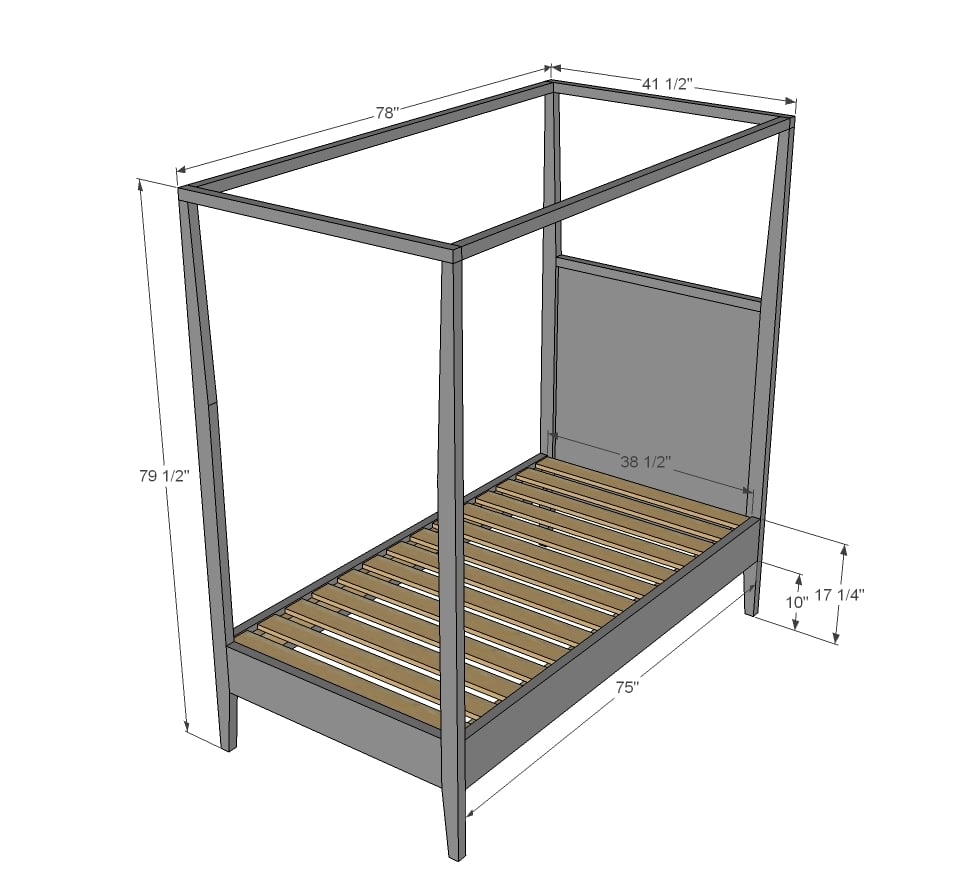
Preparation
4 - 2x3 @ 8 feet or stud length (if you can't get 2x3s, you can also rip 2x6s into 2 1/2" widths to make your own - you'll need 2 - 2x6s @ 8 feet or stud length if you do this)
2 - 2x2 @ 8 feet long
1 - 1/2 sheet of hardwood plywood (I used PureBond Birch)
1 - 2x8 @ 10 feet long
1 - 2x8 @ 8 feet long
2 - 2x4 @ 8 feet or stud length
slats - you can get two out of one 8 foot board - we used 2x4s
1 1/4" and 2 1/2" pocket hole screws are highly recommended
2 1/2" wood screws for attaching the cleats to the siderails
4 - 2x3 @ 78" (legs - taper in step 1)
2 - 2x2 @ 36 1/2" (headboard top/bottom)
1 - 3/4" hardwood plywood @ 39" x 36 1/2" (I used PureBond Birch)
Please read through the entire plan and all comments before beginning this project. It is also advisable to review the Getting Started Section. Take all necessary precautions to build safely and smartly. Work on a clean level surface, free of imperfections or debris. Always use straight boards. Check for square after each step. Always predrill holes before attaching with screws. Use glue with finish nails for a stronger hold. Wipe excess glue off bare wood for stained projects, as dried glue will not take stain. Be safe, have fun, and ask for help if you need it. Good luck!
Instructions
Step 1
This was definitely the most difficult part of the bed build - tapering the legs with a circular saw. But the bed just is so much cuter with the tapered legs - so very worth the effort! Start the taper from the end cut of the board. We sanded the finished cut with a belt sander as well to smooth it out.
You'll need to cut four legs total.
Step 2
Step 3
Step 4
Next, add the top through the predrilled 1 1/2" pocket holes with 2 1/2" pocket hole screws.
This entire panel can now be finished (pocket holes filled, sanded and painted). The bed itself will be too big to move into a room, so you'll need to bring the headboard panel, footboard panel, and siderails in seperately, then assemble in the room.
Step 6
Step 7
It is always recommended to apply a test coat on a hidden area or scrap piece to ensure color evenness and adhesion. Use primer or wood conditioner as needed.


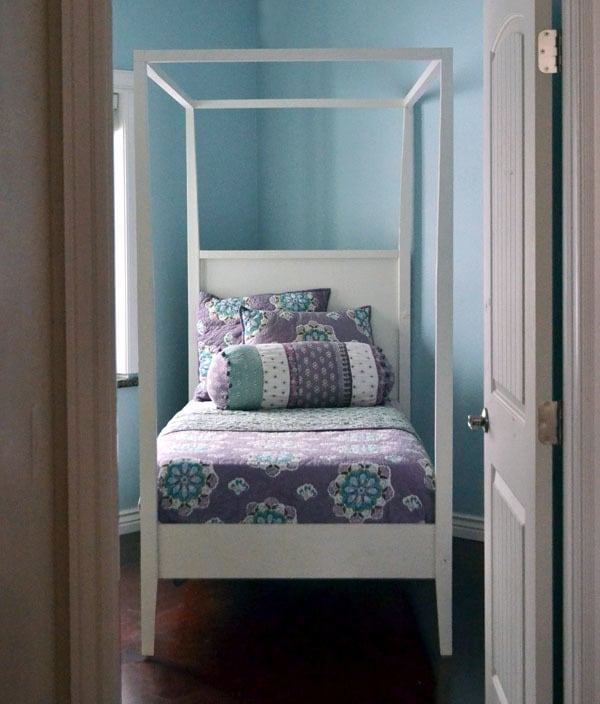

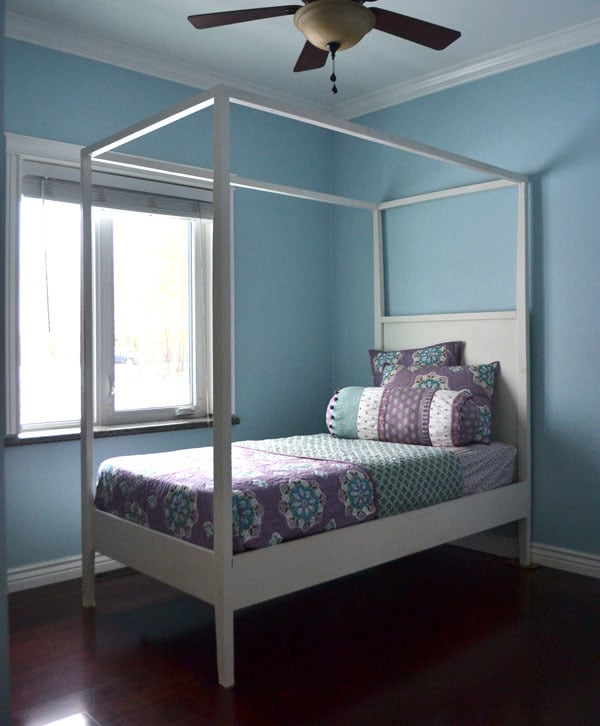


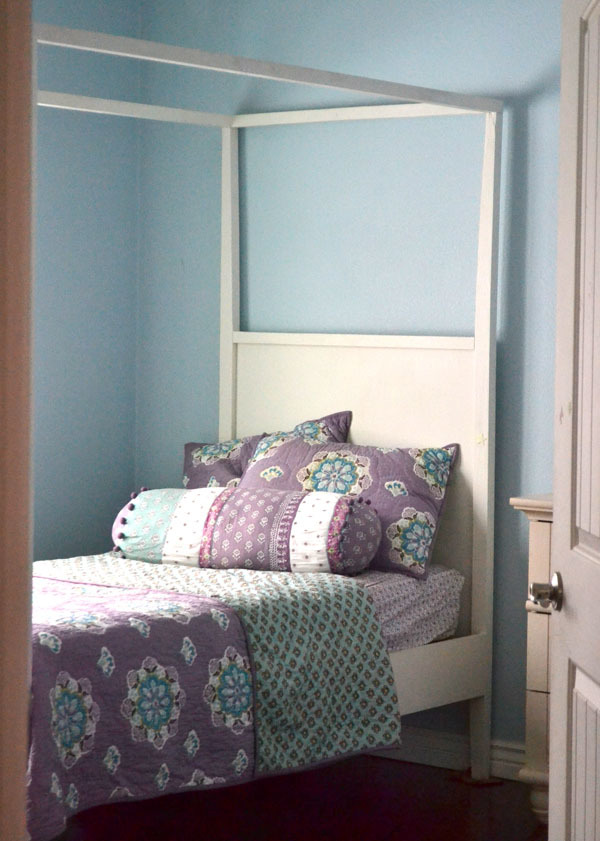










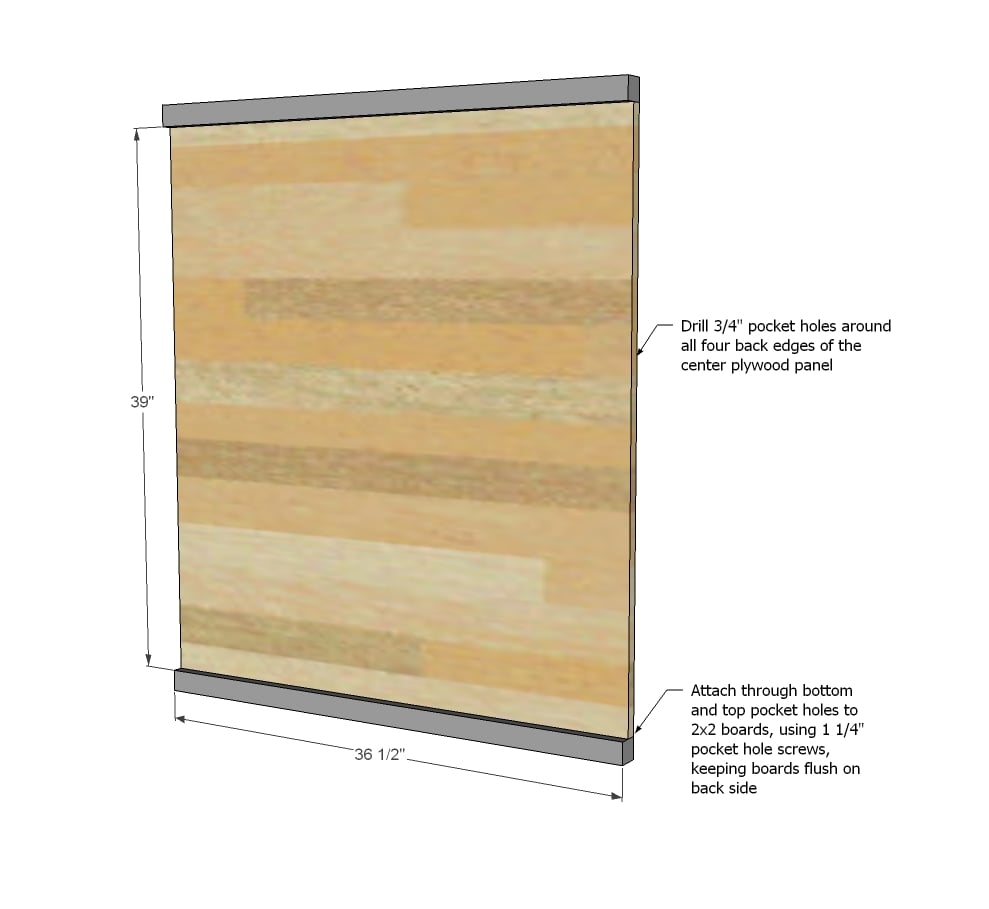

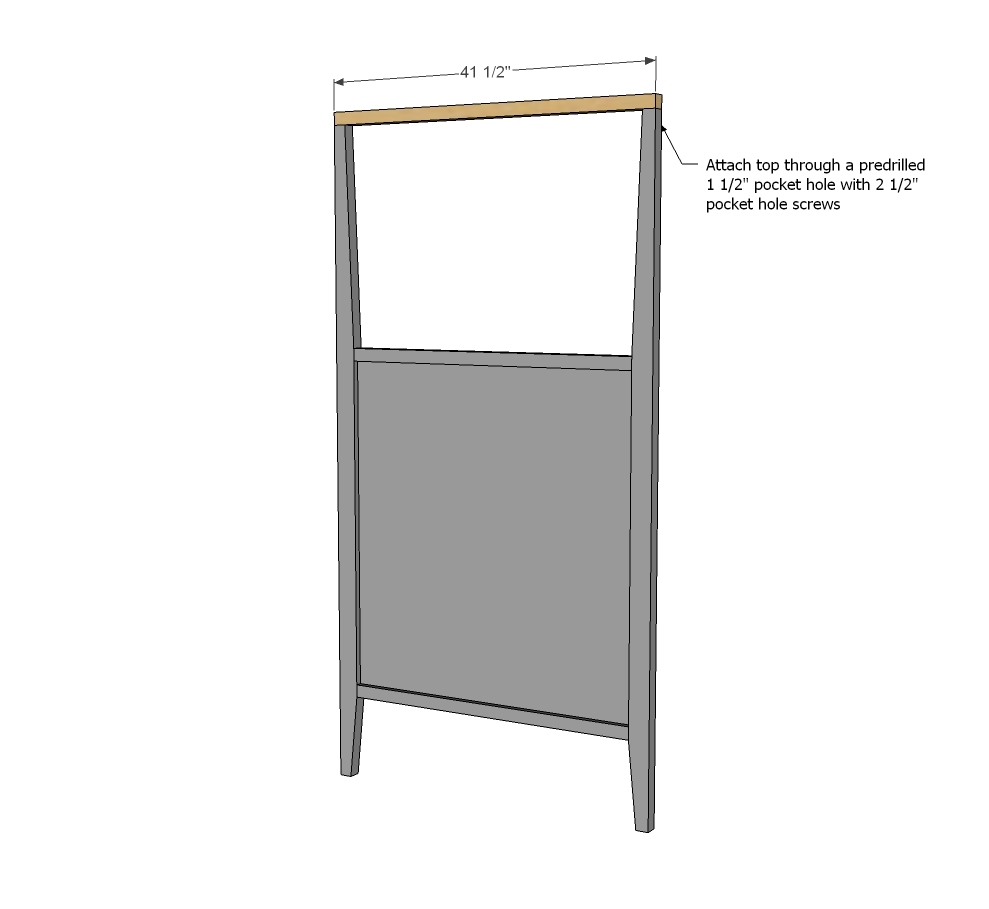
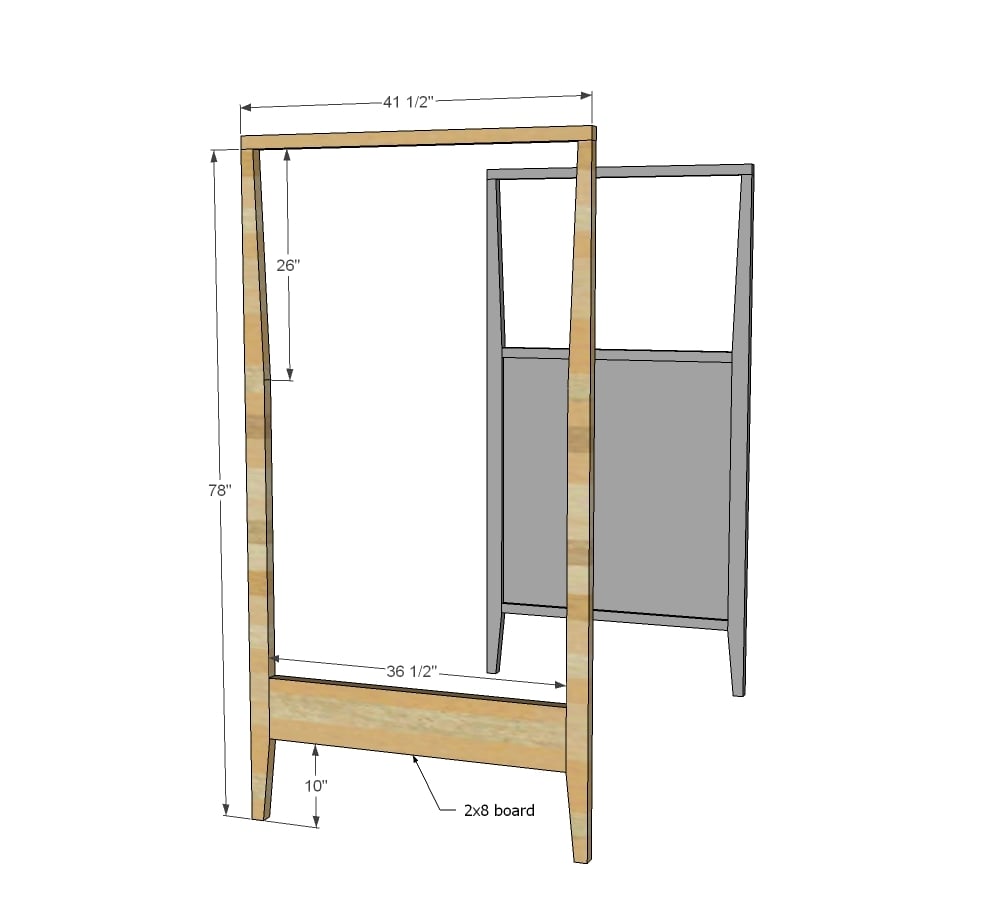


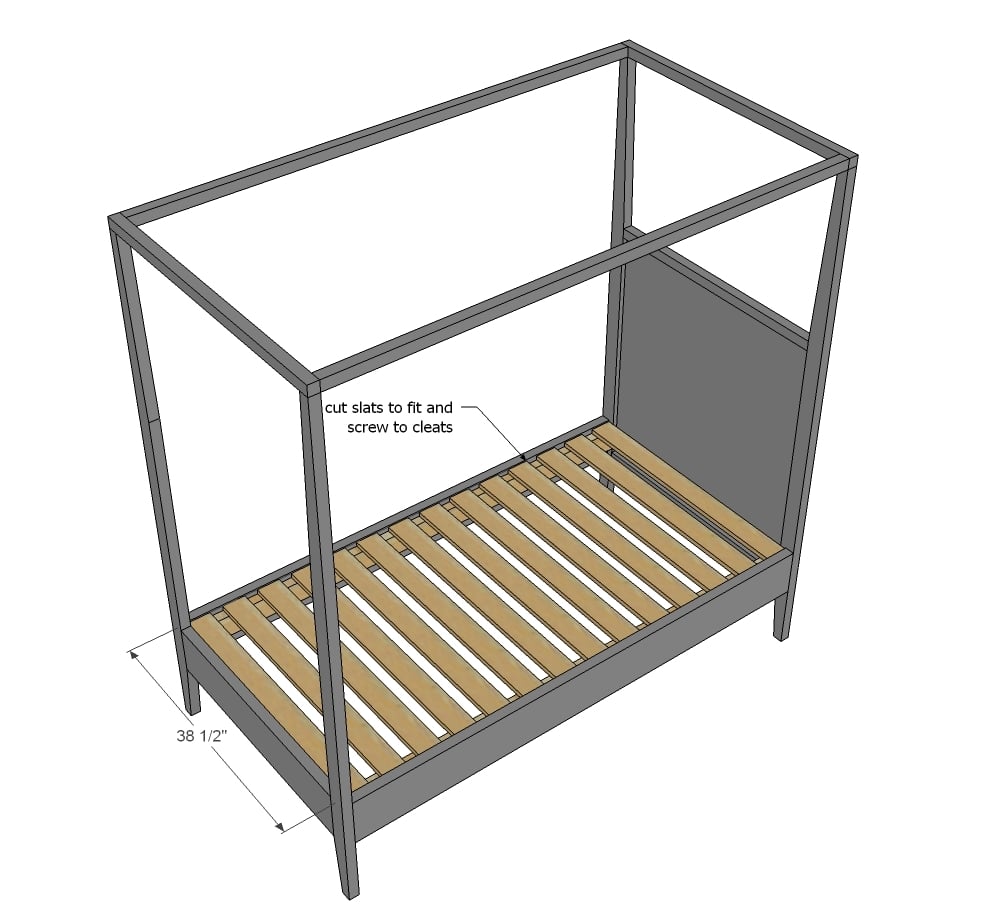


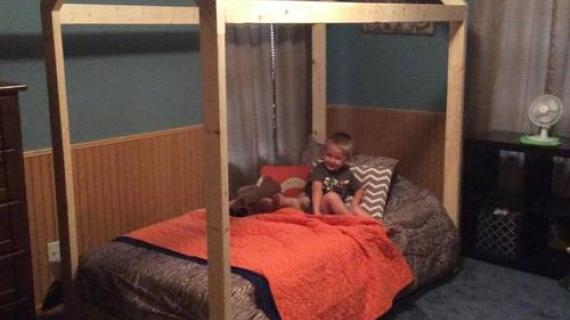
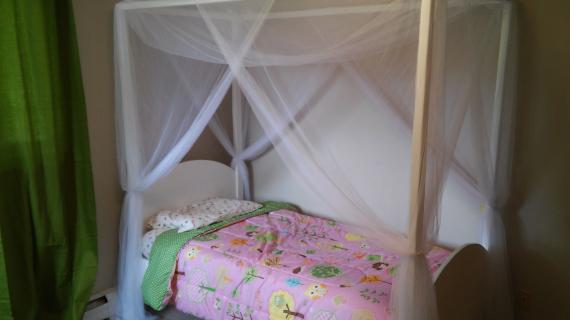
Comments
monet419
Mon, 09/30/2013 - 12:18
Could I make this for a Queen sized bed?
I've been searching for a modern looking four poster/canopy frame for our queen sized bed. The Architecture Bed from Room and Board is too expensive, and the Edlund bed from Ikea was discontinued. I love the look of this one! Do you think I could adapt the plan for a larger bed?
Kristi F.
Fri, 03/27/2015 - 12:54
Bed
I was just wondering what the cleats are that you are using for the slats
In reply to Bed by Kristi F.
Ana White
Sat, 03/28/2015 - 09:00
See diagram in Step 6, the
See diagram in Step 6, the cleats are 2 x 4's. Determine if you want to use
2 x 4's for slats or 1 x 4's for slats to know the gap that needs to be
left at the top of the cleat, also shown on diagram in step 6. Hope this
helps!
BrittnyGuinn
Sat, 09/16/2017 - 18:27
Trundle
Can a trundle fit under this bed? If so do you a have a plan for a trundle that would fit under it?